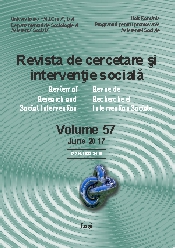Predicting Suicide Risk among Male Offenders: The Role of Severe Personality Disorders
Predicting Suicide Risk among Male Offenders: The Role of Severe Personality Disorders
Author(s): Cozmin Mihai, Roxana Chiriţă, Viorel Robu, Ilinca UNTU, Andreea Silvana SzalontaySubject(s): Social Sciences
Published by: Expert Projects Publishing
Keywords: male offenders; suicidal antecedents; current suicide risk; vulnerabilities related to personal life history; severe personality disorders; predictive models;
Summary/Abstract: One of the most critical complications of severe personality disorders is suicide. Earlier studies on patients with borderline personality disorder have reported rates from 8% to 10% of completed suicide. Some prospective investigations have also revealed antisocial personality disorder among predictors of future suicide attempts. On the other hand, there is substantial empirical evidence that severe personality disorders robustly predict suicidal behaviours among male and female offenders. In Romania, the literature on suicidal behaviours in prisons is relatively scarce. This study responds to a call to investigate factors that contribute to the prediction of lifetime suicide risk among persons imprisoned for criminal offences. Our aim was to test predictive models of current suicide risk and suicidal antecedents among imprisoned male offenders. A principal focus was on the role of severe personality disorders. Participants were 338 males incarcerated for a wide range of violent or non-violent offences (Mage = 34.41 years; SD = 8.95). Participants were interviewed individually using a protocol for demographic data, judicial status, vulnerabilities related to personal life history, and suicidal antecedents. The current suicide risk was captured with the Suicidal Behaviors Questionnaire- Revised. The psychiatric history and current diagnoses were collected from personal records. Raw data were analyzed using parametric and non-parametric comparative tests, multiple linear regression and binary logistic regression. At the time of data collection, eighty-two participants (24.3%) were diagnosed with at least one severe personality disorder. Antisocial personality disorder was prevalent (52.4%). Other diagnoses included: emotionally unstable personality disorder (17%), emotionally unstable personality disorder-impulsive type (13.4%), and borderline personality disorder (9.7%). Violent victimization during early socialization, disharmonic organization of personality in adolescence, personal history of self-harming behaviours, negative global perception of childhood and adolescence, and the presence of a severe personality disorder were predictors of suicidal antecedents. On the other hand, disharmonic organization of personality in adolescence, previous self-harming behaviours, and the diagnosis of severe personality disorder were the main predictors of current suicide risk. Furthermore, the likelihood of a future suicide attempt was higher among male inmates who had suicidal antecedents. The results suggest that severe personality disorders should be considered when developing self-destructive behaviours prevention programs in prisons.
Journal: Revista de Cercetare şi Intervenţie Socială
- Issue Year: 2017
- Issue No: 57
- Page Range: 28-50
- Page Count: 23
- Language: English

